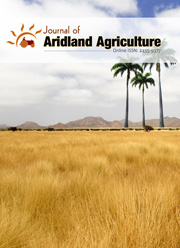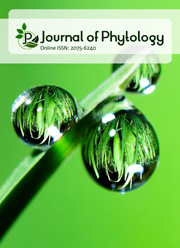Development of a computer aided decision support system for the design of drip irrigation laterals
DOI:
https://doi.org/10.25081/jaa.2023.v9.8444Keywords:
Drip irrigation, Frictional loss, Python, Relative pressure head variation, SimulationAbstract
Drip Design Check (DDC) is a powerful software solution designed to assist irrigation system designers in evaluating the effectiveness of their drip irrigation designs for non-uniform slope conditions. The software makes use of recent developments in drip design methods as well as the advancements in software development methodologies for simulating and optimizing the design of laterals. The software features an easy-to-use interface that allows users to input key design parameters, including slope details, discharge rate of drippers, length of lateral, spacing between drippers and pressure head at the inlet of lateral. The software calculates relative pressure head variation (vh) and pressure head values at each outlet. The software evaluates the goodness of the design based on the allowable relative pressure head variation. Simulation of lateral also considers dripper connection losses. Variations in lateral and dripper configurations are handled by the software in line with the intuition of the user’s perceptions. Hence, data input is simple and easy. The software can be used to analyse numerous design alternatives and to identify the most appropriate design. DDC has undergone several tests using different typical sample data and hence its accuracy and reliability are more. Demonstrations were conducted for designers to assess the user friendliness of the drip simulation software, and we received favourable feedback from them. In summary, Drip Design Check is a useful and reliable tool for the irrigation industry to check the goodness of lateral design.
Downloads
References
Ame, M. A., & Shouhua, C. (2022). Economic pipe diameter of laterals in small tube irrigation system. Alexandria Engineering Journal, 61(7), 5361-5370. https://doi.org/10.1016/j.aej.2021.10.057
Attia, S. S., El-Gindy, A.-G. M., Mansour, H. A., Kalil, S. E., & Arafa, Y. E. (2019). Performance analysis of pressurized irrigation systems using simulation model technique. Plant Archives, 19(S1), 721-731.
Battikhi, A. M., & Abu-Hammad, A. H. (1994). Comparison between the efficiencies of surface and pressurized irrigation systems in Jordan. Irrigation and Drainage Systems, 8, 109-121. https://doi.org/10.1007/BF00881179
Christiansen, J. E. (1942). Irrigation by sprinkling. Agricultural Experiment Station Bulletin 670. Berkeley, California: University of California,
Darwish, W. M. B., El-Howeity, M. A., & Elbelkemy, M. S. (2022). Application of HydroCalc program to choose the optimum drip irrigation system design. Misr Journal of Agricultural Engineering, 39(1), 133-152. https://doi.org/10.21608/mjae.2021.108081.1054
FAO. (2011). Food and Agriculture Organization. The State of the World’s Land and Water Resources for Food and Agriculture (SOLAW) - Managing Systems at Risk. Retrieved from https://www.fao.org/3/cb7654en/cb7654en.pdf
Johansson, R. (2019). Introduction to Computing with Python. In R. Johansson (Eds.), Numerical Python (pp. 1-41) Berkeley, CA: Apress. https://doi.org/10.1007/978-1-4842-4246-9_1
Keller, J., & Karmeli, D. (1974). Trickle irrigation design parameters. Transactions of the American Society of Agricultural Engineers, 17(4), 678-684. https://doi.org/10.13031/2013.36936
Keller, J. (1990). Sprinkle and Trickle Irrigation. New York, US: Springer.
Khan, S., Tariq, R., Yuanlai, C., & Blackwell, J. (2006) Can irrigation be sustainable? Agricultural Water Management, 80(1-3), 87-99. https://doi.org/10.1016/j.agwat.2005.07.006
Kooij, S. V. D., Zwarteveen, M., Boesveld, H., & Kuper, M. (2013). The efficiency of drip irrigation unpacked. Agricultural Water Management, 123, 103-110. https://doi.org/10.1016/j.agwat.2013.03.014
Krishnan, M., & Ravikumar, V. (2002). A software for design of drip subunits with tapered pipes in non-uniform slopes. Journal of Agricultural Engineering, 39(4), 28-36.
Mirza, M. (2018, November 19-22). Control and analysis of drip irrigation system. International Conference on Renewable, Applied and New Energy Technologies (pp. 1-8). Air University.
Narayanan, R., Steele, D. D., & Scherer, T. F. (2002). Computer model to optimize above-ground drip irrigation systems for small areas. Applied Engineering in Agriculture, 18(4), 459-469. https://doi.org/10.13031/2013.8746
Nikolaou, G., Neocleous, D., Christou, A., Kitta, E., & Katsoulas, N. (2020). Implementing sustainable irrigation in water-scarce regions under the impact of climate change. Agronomy, 10(8), 1120. https://doi.org/10.3390/agronomy10081120
Palau, C. V., Arviza, J., Balbastre, I., & Manzano, J. (2020). DIMSUB, a computer program for designing microirrigation subunits. Tool definition and case studies. Scientia Agricola, 77(3), e20180184. https://doi.org/10.1590/1678-992x-2018-0184
Patel, N., Rajput, T. B. S., Dinkar, D. K., Ram, S., & Singla, S. K. (2018). DOMIS: a decision support system for design and cost estimation of micro-irrigation systems. Current Science, 115(2), 2240-2248. https://doi.org/10.18520/cs/v115/i12/2240-2248
Pedras, C. M. G., Pereira, L. S., & Goncalves, J. M. (2009). MIRRIG: A decision support system for design and evaluation of microirrigation systems. Agricultural Water Management, 96(4), 691-701. https://doi.org/10.1016/j.agwat.2008.10.006
Ravikumar, V. (2022a). Hydraulics of Micro irrigation Pipes. In V. Ravikumar (Eds.), Sprinkler and Drip Irrigation (pp. 247-267) Singapore: Springer. https://doi.org/10.1007/978-981-19-2775-1_9
Ravikumar, V. (2022b). Design with Telescopic Pipes in Uniform and Non-uniform Slopes. In V. Ravikumar (Eds.), Sprinkler and Drip Irrigation (pp. 307-351) Singapore: Springer. https://doi.org/10.1007/978-981-19-2775-1_11
Ravikumar, V. (2022c). Drip Subunit Design with Uniform Diameter Pipes in Uniform Slopes. In V. Ravikumar (Eds.), Sprinkler and Drip Irrigation (pp. 269-305) Singapore: Springer. https://doi.org/10.1007/978-981-19-2775-1_10
Ravikumar, V. (2022d). Drip Irrigation Components. In V. Ravikumar (Eds.), Sprinkler and Drip Irrigation (pp. 151-213) Singapore: Springer. https://doi.org/10.1007/978-981-19-2775-1_7
Sharu, E. H., & Ab Razak, M. S. (2020). Hydraulic performance and modelling of pressurized drip irrigation system. Water, 12(8), 2295. https://doi.org/10.3390/w12082295
Sidhu, R. K., Kumar, R., Rana, P. S., & Jat, M. L. (2021). Automation in drip irrigation for enhancing water use efficiency in cereal systems of South Asia: Status and prospects. Advances in Agronomy, 167, 247-300. https://doi.org/10.1016/bs.agron.2021.01.002
TORO. (2014). AquaFlow User’s manual. Retrieved from https://www.toro.com/~/media/Files/Toro/Agriculture/Resources/AquaFlow%204%20Manual_140606.ashx
Wang, J., & Chen, R. (2020). An improved finite element model for the hydraulic analysis of drip irrigation subunits considering local emitter head loss. Irrigation Science, 38, 147-162. https://doi.org/10.1007/s00271-019-00656-0
World Bank. (2006). Reengaging in Agricultural Water Management. Challenges and Options, Washington, DC.
Wu, I. P., & Barragan, J. (2000). Design criteria for micro irrigation system. Transactions of the American Society of Agricultural Engineers, 43(5), 1145-1154. https://doi.org/10.13031/2013.3007
Wu, I.-P., & Gitlin, H. M. (1974). Design of Drip Irrigation Lines. Technical Bulletin No. 96, Hawaii Agricultural Experiment Station, University of Hawaii. Retrieved from https://scholarspace.manoa.hawaii.edu/server/api/core/bitstreams/2b82c6b3-76a3-4381-9994-1631f73716c5/content
Wu, P., Saruwatari, C. A., & Gitlin, H. M. (1983). Design of drip irrigation lateral length on uniform slopes. Irrigation Science, 4(2), 117-135. https://doi.org/10.1007/BF00273380
Zhang, L., Wu, P., & Zhu, D. (2013). Hydraulic design procedure for drip irrigation submain unit based on relative flow difference. Irrigation Science, 31, 1065-1073. https://doi.org/10.1007/s00271-012-0388-3
Published
How to Cite
Issue
Section
Copyright (c) 2023 K. K. Shaheemath Karatt, Ravikumar Veerabadran, Balaji Kannan, M. R. Duraisamy, Patil Santosh Ganapati

This work is licensed under a Creative Commons Attribution-NonCommercial 3.0 Unported License.





 .
.